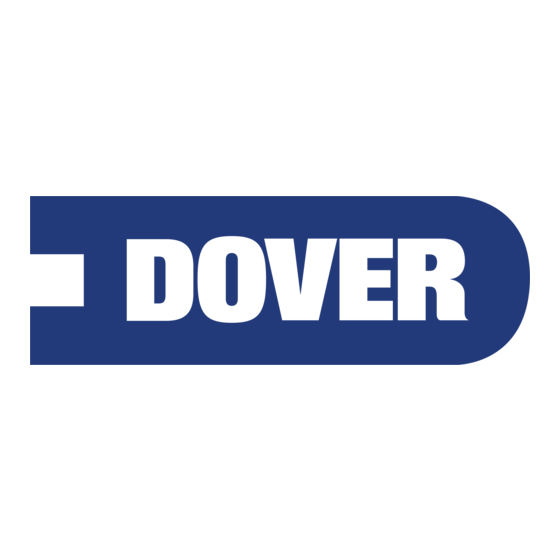Dover PSG Blackmer LGL158A 설치, 작동 및 유지보수 지침 - 페이지 11
{카테고리_이름} Dover PSG Blackmer LGL158A에 대한 설치, 작동 및 유지보수 지침을 온라인으로 검색하거나 PDF를 다운로드하세요. Dover PSG Blackmer LGL158A 12 페이지. Liquefied gas pumps

Maintenance shall be performed by qualified technicians only, following the appropriate procedures and
SYMPTOM
Pump Not
1. Pump not wetted.
Priming
2. Worn vanes.
3. Internal control valve closed.
4. Strainer clogged.
5. Inlet line or valves clogged or too restrictive.
6. Pump vapor-locked.
7. Pump speed too low for priming.
8. Relief valve partially open, worn or not seating properly.
Reduced
1.
Pump speed too low.
Capacity
2.
Internal control valve not fully open.
3.
Excessive inlet line restrictions (undersized piping, too many elbows & fittings, clogged strainer, etc.).
4.
Damaged or worn parts (vanes, cylinder, or rotor).
5.
Excessive restriction in discharge line causing partial flow through the relief valve.
6.
Relief Valve worn, set too low, or not seating properly.
7.
External Bypass Valve set too low.
8.
Operating without a vapor return line.
9.
Vanes installed incorrectly (see "Vane Replacement").
10. Liner installed backwards.
Noise
1. Excessive pressure drop on the pump due to:
a.
b.
c.
2. Running the pump for extended periods with a closed discharge line.
3. Pump not securely mounted.
4. Improper drive line – truck mounted pumps (See "Pump Drive").
5. Misalignment of pump, reducer, or motor - base mounted pumps.
6. Bearings worn or damaged.
7. Vibration from improperly anchored piping.
8. Bent shaft, or drive coupling misaligned.
9. Excessively worn rotor.
10. Malfunctioning valve in the system.
11. Relief valve setting too low.
12. Liner installed backwards.
13. Damaged vanes (see following category).
Damaged Vanes
1. Foreign objects entering the pump.
2. Running the pump dry for extended periods of time.
3. Cavitation.
4. Excessive heat.
5. Hydraulic hammer - pressure spikes.
6. Vanes installed incorrectly (see "Vane Replacement").
7. Incompatibility with the liquids pumped.
Broken Shaft
1. Foreign objects entering the pump.
2. Relief valve not opening.
3. Hydraulic hammer - pressure spikes.
4. Pump/driver, driveline/drive shaft misalignment.
5. Excessively worn vanes or vane slots.
Mechanical Seal
1. O-rings not compatible with the liquids pumped.
Leakage
2. O-rings nicked, cut or twisted.
3. Shaft at seal area damaged, worn or dirty.
4. Bearings over-greased.
5. Excessive cavitation.
6. Mechanical seal faces cracked, scratched, pitted or dirty.
Overload on
1. Motor Horsepower not sufficient for application.
Motor
2. Improper wiring and/or low voltage to motor.
3. Misalignment
4. Excessive pressure or speed.
5. Faulty or worn bearings.
6. Rotor rubbing against discs or liner.
7. Dirty mechanical seal faces.
TROUBLESHOOTING
warnings as presented in this manual.
Undersized or restricted fittings in the inlet line.
Pump speed too fast.
Pump too far from fluid source.
501-K00
NOTICE:
PROBABLE CAUSE
Page 11/12
